
The violin sound is iconic, and it draws us in for many different, sometimes personal, reasons. Violinists can create soaring, singing sounds, or devastating wailing cries. The lower range of the violin is close to the range of a human voice, and the higher range might remind you of birdsong.
Our love of this tone brings us all here and influences our own violin playing. Were you inspired to learn this instrument after hearing a particularly powerful recording or concert? I know I was!
No matter why you’re drawn to the sound of the violin, making these sounds yourself—whether you’re an amateur or a seasoned professional—is difficult and requires dedication and the right tools.
Let’s talk about what makes the violin sound so beautiful, how the acoustics work, and how we can achieve those sounds ourselves.
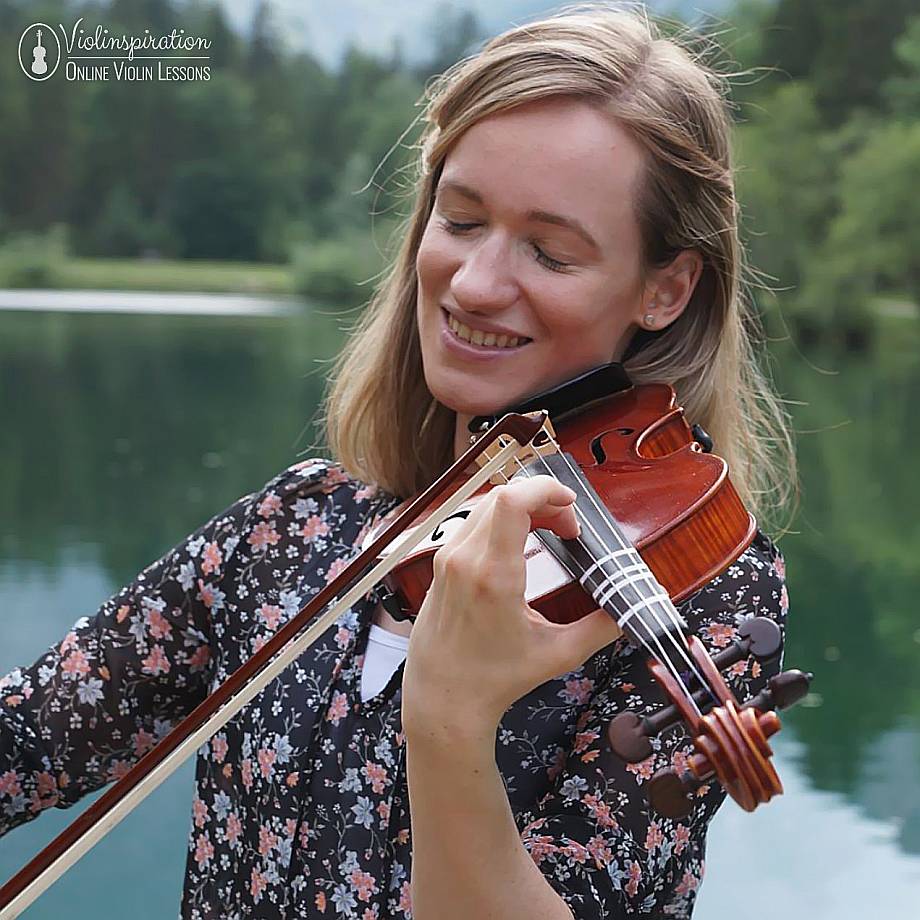
What Makes the Violin Sound so Beautiful?
The violin sound is unique because it can be transformed based on how we play it. Using the bow creates a sustained, singing sound, and plucking (or pizzing) the strings creates a short sound that might remind you of raindrops. Also, your playing style greatly affects the type of sounds you make.
The violin generally has an elegant, graceful sound, but in fiddle music, it can sound rough, playful, or nostalgic. Depending on the type of music and the player, it can sound longing, enthusiastic, or even full of despair.
Every violinist will bring something a little different to the table, and one violin can sound completely different depending on who’s playing it! We all have a different touch with the bow and our fingers, and we all have different ideas of what we want to hear, and what is most beautiful.
Sounds That Can Be Created on the Violin
The violin is capable of so many different sounds that convey a huge range of emotions. Here are a few “violin effects” we can create:
- Warm, rich, singing tones
- Short spiccato
- Ponticello
- Sul tasto
- Tremolo
Harmonics
- Pizzicato
Sound effects
Violin Sound Creation
How is the sound produced on the violin? First, let’s talk about the acoustics of the violin. Then we’ll move on to the way we as players create this sound.
Violin Acoustics
The violin is made of wood that vibrates when the strings are bowed or plucked. The wood on the instrument carries the vibrations, and the f holes and soundpost amplify the sound.
There are so many components in the violin itself that vibrate and play a role in creating the sound that we hear. The bridge holds up the vibrating string, and it conducts the vibrations down to the top plate (the front of the instrument). The top plate connects to the bass bar and the soundpost, which are both inside the instrument. The bass bar is located below the bass foot side of the bridge, and the sound post is located inside near the right f hole. The f holes allow all of those sounds and vibrations to escape.
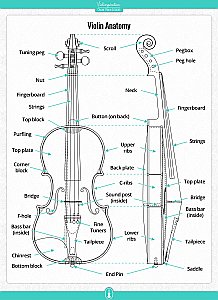
Violin Anatomy
Set of 3 Posters
How We Create Sound
We as violinists create sound by drawing the bow across the strings. We need to use a certain amount of bow pressure to create the tone that we’re looking for. We create individual notes by pressing our left-hand fingers on the strings which is called stopping the notes.
Rosin
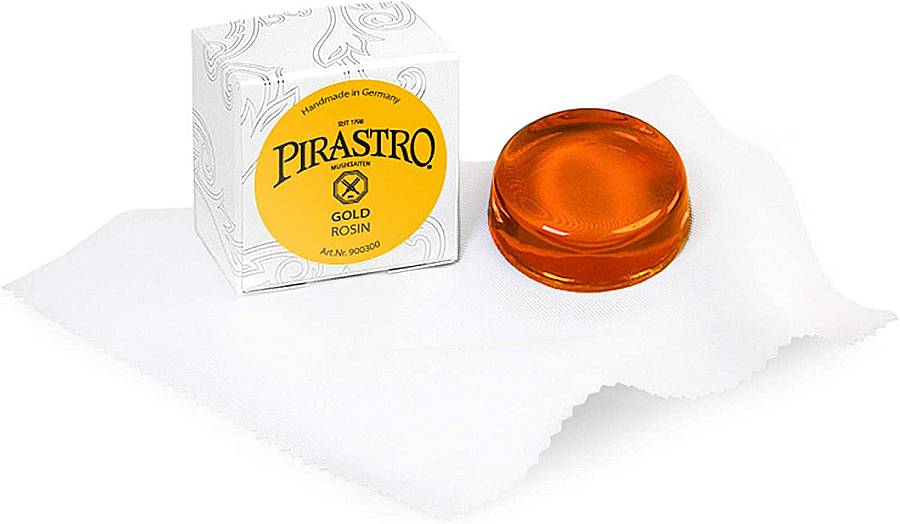
Before playing, we need to make sure there’s enough rosin on the bow. Rosin is sticky and provides friction between the bow hairs and the strings. Without rosin, the bow will kind of “skate” across the string, and you’ll only hear a very faint whisper of a sound.
Bow Technique
Bow technique is a very important consideration when we’re thinking about our violin’s sound. Too little bow pressure, or weight, will only create a quiet, frail sound; while too much weight will create scratches and croaks.
Bow Location
In general, we want to keep our bow straight, and about halfway between the bridge and the end of the fingerboard. This location creates the clearest, most consistent sound. We call the location of the bow the contact point.
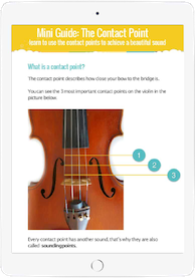
FREE Contact Point Guide
Improve Your Contact Points Technique
We can change the bow location to create different effects. If you’re looking for a glassy, creepy sound, play close to the bridge. This technique is called “sul ponticello.”
If you want to play very quietly, pianissimo, play with the bow very close to the end of the fingerboard, or even just on top of it. You’ll hear a very hushed sound.
Acoustic Violin Sound vs. Electric Violin Sound
Traditional, “acoustic” violins amplify themselves through the vibrations created and from being transferred through the f holes. Electric violins, however, aren’t quite as straightforward.
Some electric violins can produce full sound on their own. These are usually made of wood and have some of the same acoustic elements as a traditional violin. This type of electric violin is called a hollow body, because it has a hollow inside with a sound post, just like a traditional violin.
Other electric violins create little sound. These are known as solid-body instruments because there’s no opening inside for a soundpost. These must be plugged into an amplifier to create a full sound.
You may find a so-called silent violin, e.g. Yamaha’s YSV104, but please keep in mind that it is still producing sound when you play it, so it’s not completely silent just as all electric violins.
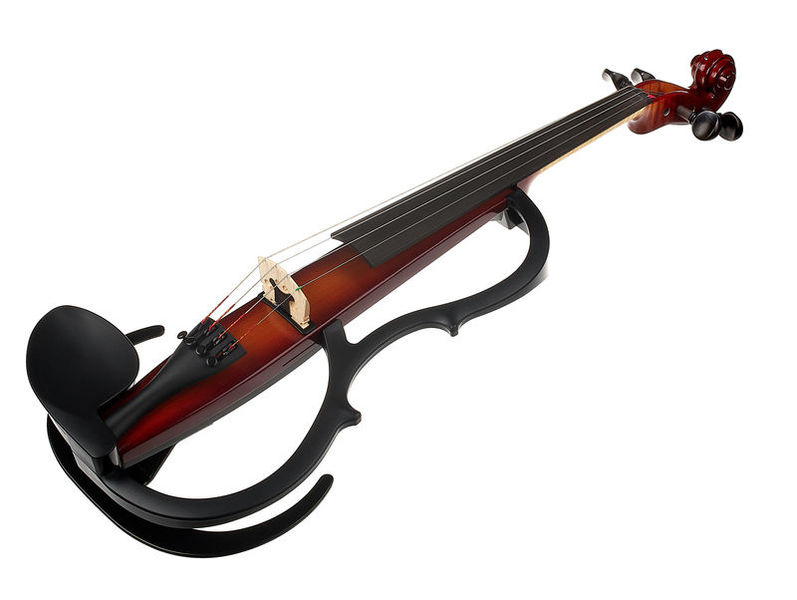
How to Improve Your Violin Sound
There are a couple of different methods you can use to improve the sound you make on the violin. Some are through the way you play, others are tools, and, if you’re unhappy with your current instrument, you can even look for an instrument with a better base sound.
Improve Your Technique to Improve Your Violin Sound
There are a few technical changes you can make to get a good tone on the violin.
Right Hand
- Contact point
You’ll want to keep the contact point about halfway between the bridge and the end of the fingerboard and keep the bow straight.
- Bow pressure
The optimal bow pressure (or bow weight) is a bit different for each violin string. The G string is the thickest and lowest sounding, and it helps to keep your arm feeling fairly heavy when you play on this string. The D string is a little thinner and higher, so a little less weight will procure a nice sound. The A and E strings are the thinnest, so you’ll want to keep bow pressure light to avoid scratchy sounds. The E string in particular requires a pretty light touch to produce a clear, singing sound.
- Bow grip
Check your bow grip at the frog—I have a guide that will help you optimize your bow hold! Your bow grip will help you play with the right amount of pressure and weight.
- Bow speed
Bow speed is another important factor to produce the exact sound you’re looking for. A slower bow speed is great for long slurs and notes on the lower strings. A quick bow speed helps keep higher notes sounding light and usually works well for detaché notes. Using too much bow per note, however, can bog you down.
- “Flat hair”
My last tip for your bow is to be sure that you’re playing with “flat hair”: in order to get the full sound, the bow hair should have full contact with the string. When we tilt the bow with our right arm, this creates a smaller sound. This is one technique you can use to play piano, but if you’re aiming for a mezzo-forte sound or louder, be sure your bow is flat on the string.
Left Hand
Are your left-hand fingers making good contact with the string? You don’t want to squeeze your hand or use too much pressure but always make sure that you’re pressing the string down entirely.
If the string isn’t pressed enough, you might hear a screeching sound or accidental harmonics.
Upgrade Your Tools
There are a few tools that you can purchase or upgrade to experience a better tone on your own violin.
Rosin
The easiest tool to upgrade is your rosin. Did you know there are different types of rosin? Light rosin isn’t quite as sticky, and dark rosin is very sticky. Lower string instruments like the bass will use very sticky dark rosin, and violinists choose less sticky, lighter rosins. Even just trying a different brand or formula of rosin can change the depth of your violin’s sound. It’s a relatively easy tool to experiment with!

Pirastro Goldflex Rosin
GET IT NOW
Support us for more FREE content No extra costs for you Recommended by Violinists
Strings
Next, you can try different violin strings. Strings wear out over time (the length of time depends on how much you play), and different brands of strings will give the same instrument a completely different type of sound.
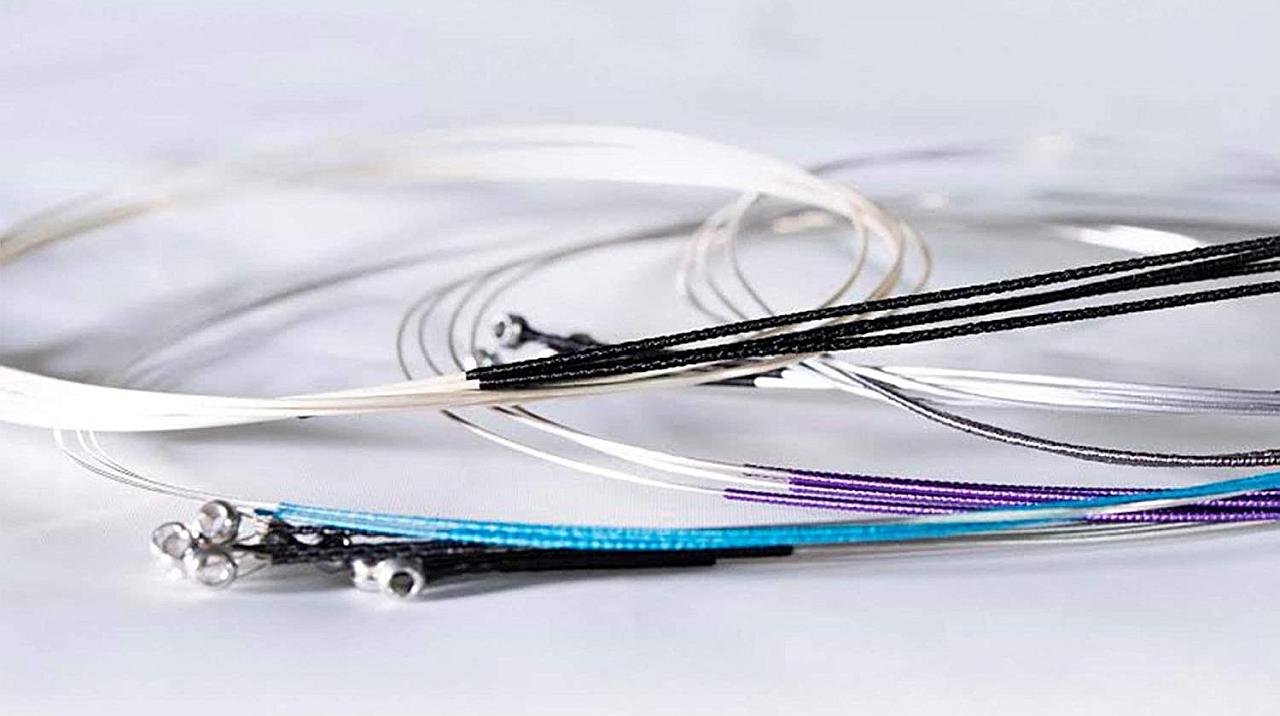
Some strings are made to be bright and direct, while others are thicker, slower, and darker. Most string brands create various lines of strings to offer a wide arrange of sound options.
Bow
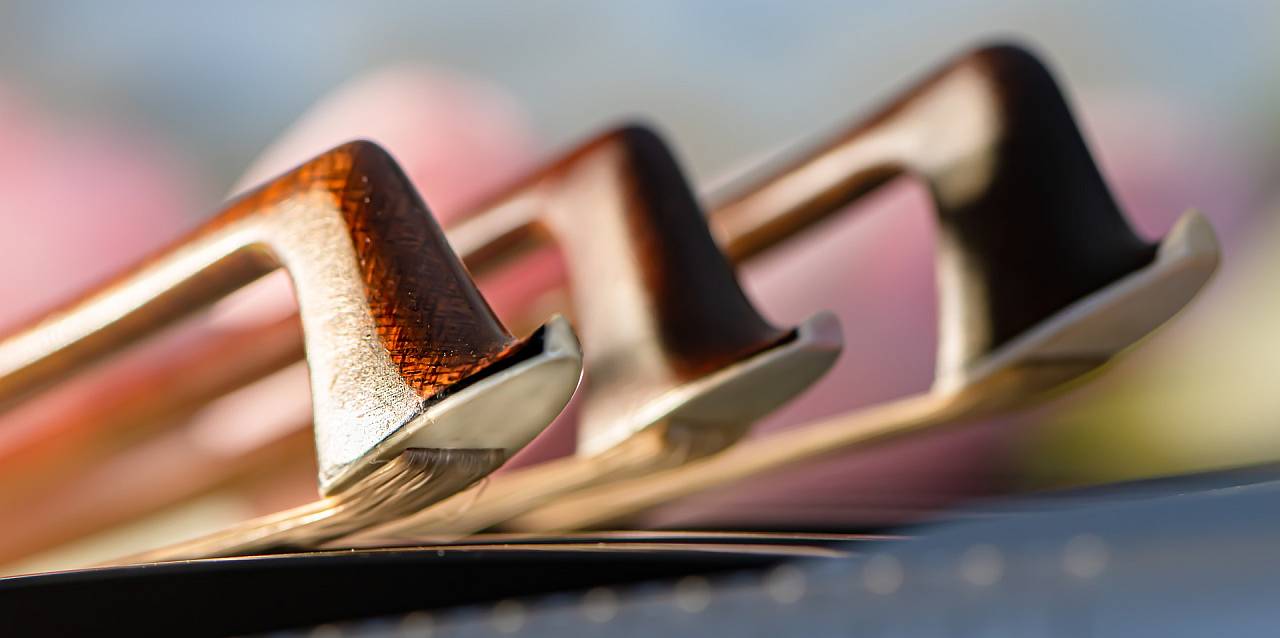
The luthier will replace the horse hair in your bow, and clean up the wooden stick. Old bow hair that should be replaced gives the violin a more quiet, dull sound. Fresh bow hair sounds more intense and full of depth.
I notice a huge difference in my violin sound every time I get my bow rehaired! It can really be a huge help.
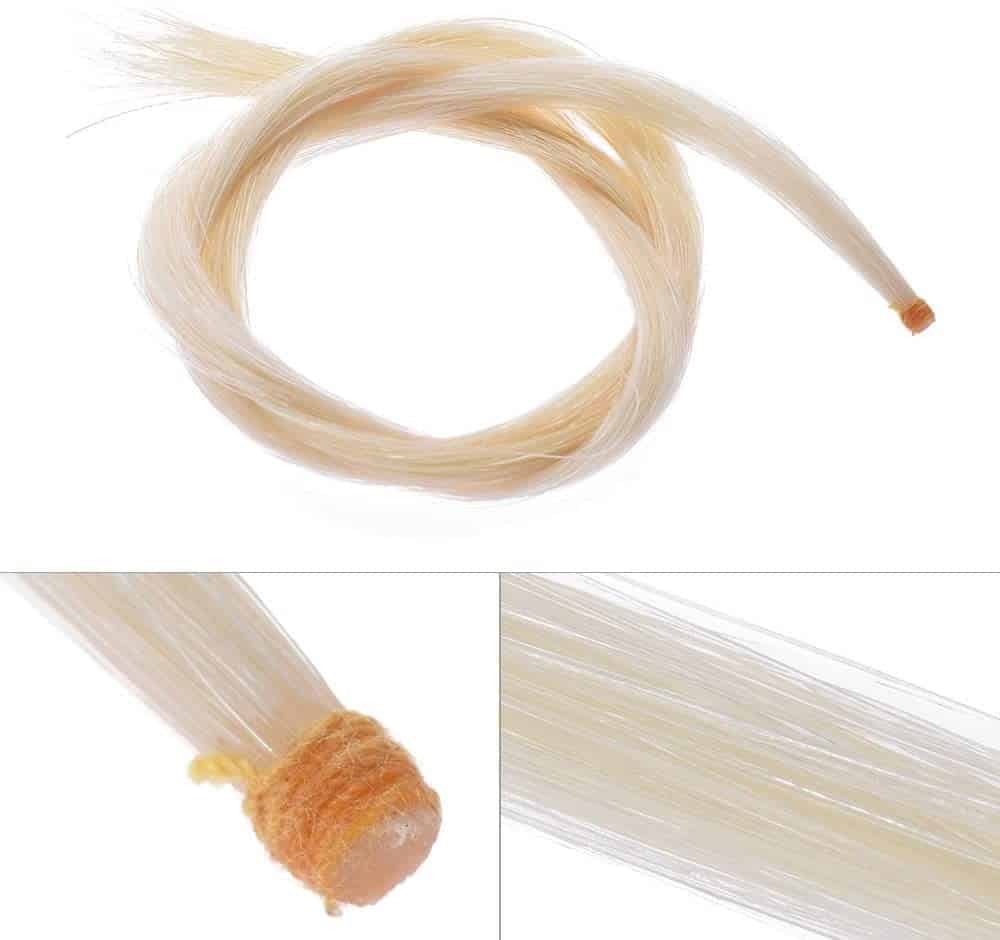
Choosing and Purchasing an Instrument
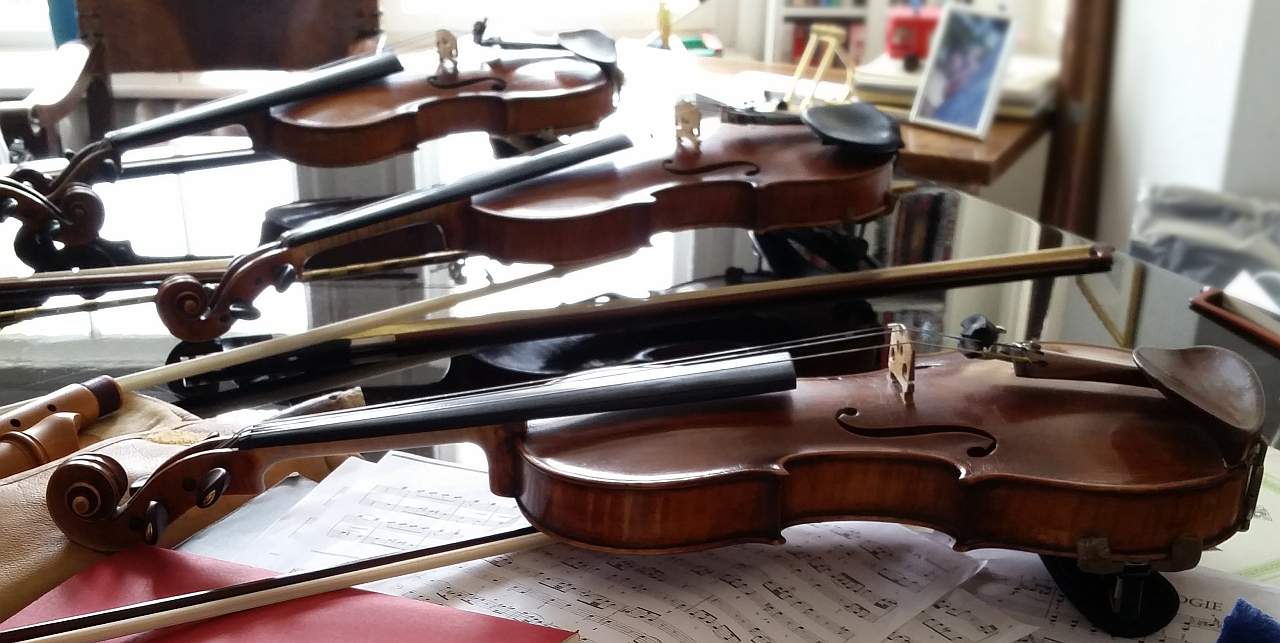
If you’re truly unhappy with the sound of your violin and you’ve tried changing your techniques and tools, upgrading your instrument is a more expensive option you can consider.
Think about what sound you like the most when you hear other violin players. Do you like a deep, rich sound? A bright, direct tone?
Every single violin is unique since they’re handcrafted. Some violins naturally have different tones, and you can look for one that naturally produces the type of sound you’re looking for.
This isn’t to say that a different violin fixes everything! You’ll still need to work to create the exact sound you’re looking for.
If you’re going to upgrade your instrument, make sure to check my buying tips over here and download the buying checklist below.
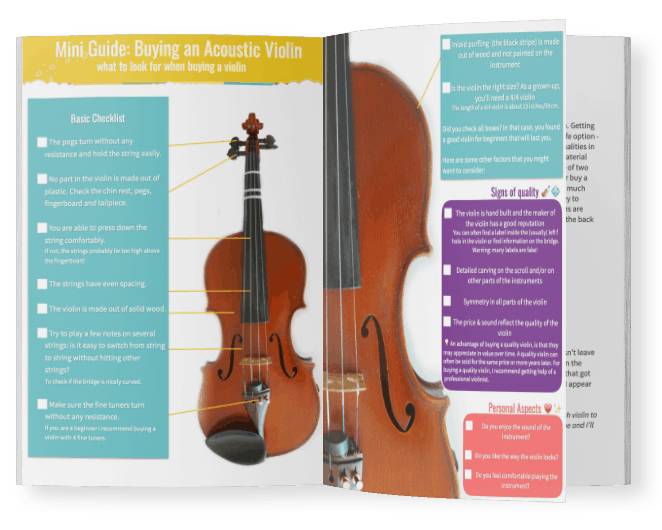
Get Your Free
Violin Buying Checklist [PDF]
Final Thoughts
No matter why you’re drawn to the unique sound of the violin, I think we can all agree that it’s difficult to achieve the exact tone that we so desperately want to hear. By knowing how the violin creates sound and what you can do to improve your own playing, I think you’ll be able to more easily achieve your playing goals.
























